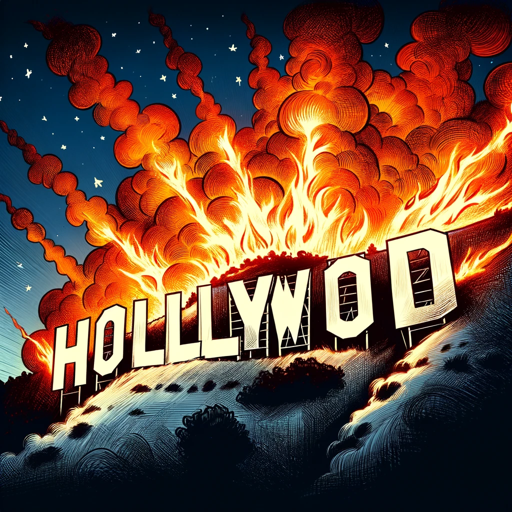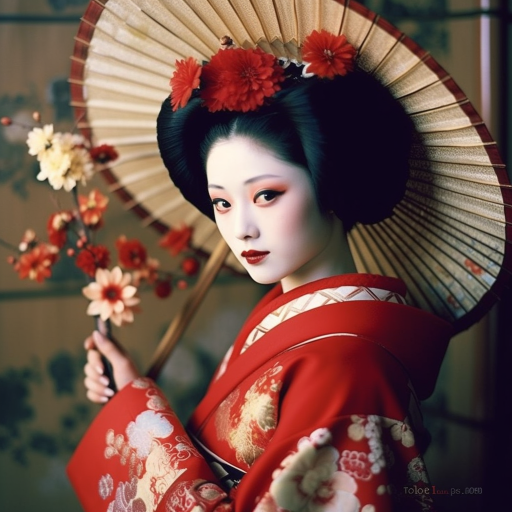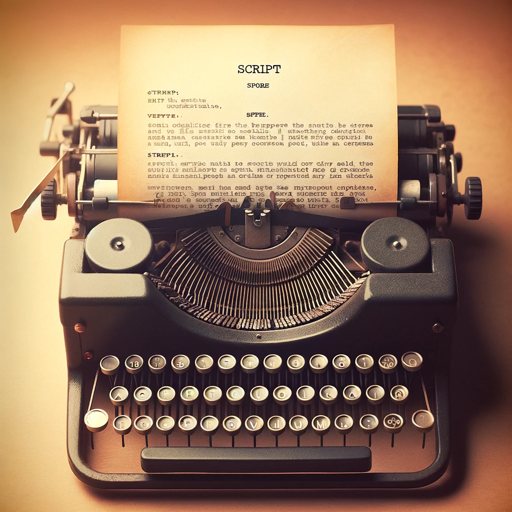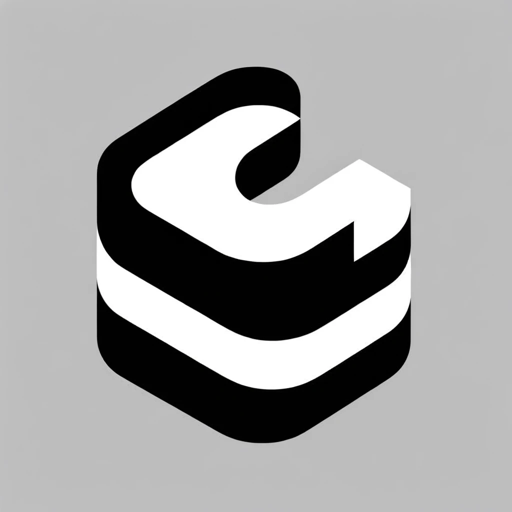Screenplay to Image GPT-AI screenplay-to-image conversion
Turn your screenplay into visuals with AI
Can you explain the purpose of this gpt and what it can do for me?
Can you create an image for this new character?
How would this city look in the story's context?
Please generate a new image for this recurring item.
Related Tools
Load More
Movie Script Writer GPT
Writes entire movie scripts.....

PPT Image GPT
It generates the best Images for your PowerPoint slides.Just send a [screenshot] of your PowerPoint slide. I'll suggest and create the best images for you. Struggling to choose the right images or spending too much time searching online? Worry no more.

ScreenWriter GPT
Filmmaker's best friend: ideation, scripting, research & storyboarding.

ImageGPT
Generate images from a single word prompt using various styles and camera angles

Screenplay and Script Converter
Converts text to script format, keeps original dialogue, uses markdown.
PixarGPT
PixarGPT es un agente de inteligencia artificial especializado en transformar fotografías de entrada en imágenes animadas al estilo de la famosa compañía de dibujos animados.
20.0 / 5 (200 votes)
Introduction to Screenplay to Image GPT
Screenplay to Image GPT is a tool designed to transform written screenplay descriptions into visual representations. It leverages AI-based image generation to create visuals for characters, locations, items, and entire scenes based on screenplay text. The main goal is to provide users—especially screenwriters, filmmakers, or creative directors—with a more tangible way to visualize their narrative elements before production begins. By generating images from written descriptions, Screenplay to Image GPT helps creators test and refine their creative concepts, ensuring that their vision is translated accurately. For instance, a user writing a sci-fi film might describe a futuristic cityscape in their screenplay. Screenplay to Image GPT can interpret this description and generate a highly detailed image of the city, helping the writer or production team better conceptualize the world they are building.

Core Functions of Screenplay to Image GPT
Character Visualization
Example
A writer describes a main character as a 'tall, slender man with silver hair, wearing a worn-out leather jacket and carrying a glowing staff.' Screenplay to Image GPT generates an image based on this description.
Scenario
This function helps a screenwriter refine a character’s look, ensuring that costume designers, animators, or casting agents understand the exact visual style and persona the writer intends. It also serves as a valuable reference during pre-production meetings.
Scene and Setting Creation
Example
A scene describes 'an ancient temple hidden deep within a jungle, with towering stone pillars covered in vines and strange glowing glyphs.' Screenplay to Image GPT interprets this and generates an image showing the jungle temple.
Scenario
Directors or production designers can use these visualizations as a blueprint for building physical sets, or VFX teams can use them to create digital environments. It bridges the gap between written and visual understanding of a setting.
Continuity in Design
Example
If a recurring prop, such as 'an ornate dagger with a sapphire embedded in its hilt,' is described in multiple scenes, Screenplay to Image GPT can generate consistent visualizations to maintain design continuity throughout the screenplay.
Scenario
This function ensures that all visual elements tied to recurring objects, characters, or locations remain consistent, which is critical for avoiding visual discrepancies during production. Designers can rely on these images for visual continuity across the story.
Target Users of Screenplay to Image GPT
Screenwriters and Filmmakers
Screenwriters who want to visualize their characters, sets, and props will benefit greatly from this tool. It helps them see their story take form visually, allowing for more immersive scriptwriting. Filmmakers use it to enhance pre-production, creating clearer references for set design, costume development, and overall scene direction.
Game Developers and Concept Artists
Game developers and concept artists involved in world-building or character design will find this tool useful for quickly iterating on visual ideas based on script descriptions. By converting ideas into visuals, these professionals can explore different visual styles and refine characters or settings without needing to rely on early hand-drawn sketches.

How to Use Screenplay to Image GPT
1
Visit aichatonline.org for a free trial without login, no need for ChatGPT Plus.
2
Input your screenplay text. You can start by describing a scene, a character, or a key element like a city or item.
3
For each segment you wish to visualize, provide as much detail as possible. The tool can fill in gaps using creative interpretation, but more detail leads to more accurate images.
4
Review and adjust the generated images. You can request modifications or confirm the visuals for consistency as the screenplay progresses.
5
Once satisfied, download or save your images to integrate them into the screenplay, or request a full visual screenplay with all approved images in order.
Try other advanced and practical GPTs
Image to Excel
AI-powered image to Excel converter.

Handwriting to text OCR
AI-powered handwriting to text conversion.

Birth Buddy
AI-powered support for pregnancy and motherhood.

Omniscient Techie
AI-Powered Insights for Computer Science

Business Card Scanner
Effortlessly transform business cards into contacts with AI.
Talk to your SpreadSheet / CSV
AI-Powered Spreadsheet and CSV Assistant

Image To Website
Convert Wireframes to Code with AI.

博士论文
AI-powered dissertation assistant

arxiv论文翻译
AI-powered translations for your research

Baby python
AI-powered tool for seamless Python coding.

Invite Maker
AI-powered invitation creation made easy.

Expert in Shiny for R
AI-powered guidance for Shiny app development

- Character Design
- Storyboarding
- Screenwriting
- Visual Concepts
- Film Preproduction
Screenplay to Image GPT FAQs
How accurate are the generated images to my screenplay descriptions?
The images are generated based on your detailed input. The more specific your description, the closer the image will be to your vision. However, the tool also uses creative interpretation to fill in gaps when needed.
Can I use the same images for recurring characters or locations?
Yes, once an image is approved, it can be reused for recurring elements like characters, locations, or objects, ensuring consistency across scenes.
What kind of elements can I visualize with Screenplay to Image GPT?
You can visualize characters, creatures, settings like cities or forests, significant items, and even specific scenes from your screenplay. The tool supports a wide range of creative elements.
Is there a limit to how many scenes or characters I can visualize?
No, there is no hard limit. You can visualize as many scenes, characters, or elements as needed. However, the more detailed your screenplay, the longer it may take to generate all the images.
How do I ensure visual consistency throughout my screenplay?
Once an image is confirmed, it can be used as a reference for future scenes. Make sure to verify key visuals early in the process to maintain consistency.